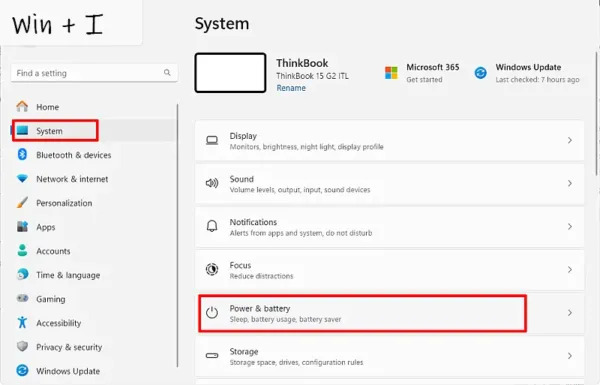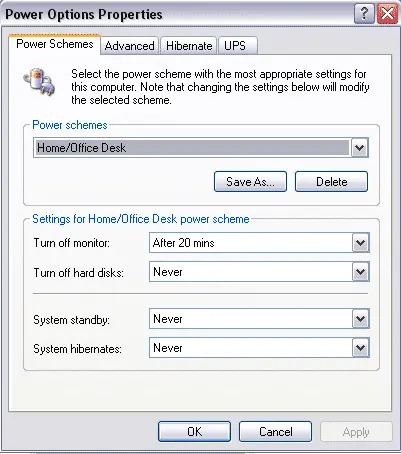Windows Power Options and Power Management settings are designed to conserve energy, optimize system performance, and give users full control over their energy usage and performance needs. However, users may want to modify the default Windows power management settings to better suit their specific needs. Below, I cover how to adjust power settings in Windows 11, 10, 7, and XP, provide troubleshooting tips for common issues, and explain why customizing these settings can enhance your experience.
Understanding Windows Power Management
Windows Power Management is a set of features designed to optimize how your computer consumes energy and manages system performance. These settings control key components such as your monitor, hard drive, processor, and sleep or hibernation modes, helping to balance energy efficiency with functionality.
Why Adjust Power Management Settings?
Here are some of the most common reasons why users choose to change Windows Power Plans or modify the default power settings:
- Conserving Energy: For laptops and portable devices, adjusting power settings can help extend battery life by reducing energy consumption when the device is idle or performing less intensive tasks.
- Optimizing Performance: Desktop users or gamers often prefer performance-focused settings, which allow the system to prioritize speed and responsiveness over energy conservation.
- Customizing Preferences: Different users have different needs. For example, you might want to prevent your screen from turning off during long presentations or adjust sleep settings for a home media server.
- Reducing Wear and Tear: Settings such as turning off the hard drive after a period of inactivity can reduce wear and extend the lifespan of your hardware.
- Adapting to Usage Scenarios: Whether you're working, gaming, or streaming, adjusting power plans can optimize your system for specific activities.
Changing Windows Power Plans
Windows typically provides the following power plans, each with distinct characteristics:
- Balanced: Offers a mix of performance and energy efficiency, suitable for most users.
- Power Saver: Focuses on conserving energy, ideal for laptops running on battery power or users looking to lower energy bills.
- High Performance: Prioritizes performance over energy savings, making it a favorite among gamers and power users.
While these default plans work for many users, you can easily change Windows Power Plans or Adjust Windows Power Modes and further customize them to suit your specific preferences. Adjusting individual settings, such as screen timeout, sleep mode, and processor performance, allows you to fine-tune your system to meet your needs.
How to Access and Adjust Windows Power Options
To begin customizing your system’s performance settings, follow these steps to access and adjust the Windows Power Options on your device:
Managing and Customizing Power Settings in Windows 10 and 11
- Press Windows key + I to open Settings.
- Navigate to System > Power & Battery.
- In the right-hand pane, click Additional power settings to access advanced power management options.
- Select your power plan and click Change plan settings to customize it.

How to Access and Adjust Power Options in Windows 7
- Click Start > Control Panel and then select Power Options.
- Select your preferred power plan (Balanced, Power Saver, or High Performance) and click Change plan settings to adjust your system’s energy settings.
How to Access and Adjust Power Options in Windows XP
- Click Start > Control Panel and select Power Options from the list. (If you don't see Power Options, select "Switch to Classic View" from the Control Panel sidebar.)

Windows Power Management FAQs
- How do I stop my monitor from turning off using Windows Power Options?
- By default, the "Turn off Display" setting is typically set to switch off the screen within 10-20 minutes. Here’s how to adjust it:
- For Windows XP and 7: Open the Power Options Properties window and adjust the "Turn off Monitor" time from the dropdown menu. Click Apply to save the changes.
- For Windows 10 and 11: Go to Power & Sleep settings, and under "Screen," modify the "When plugged in, turn off after" time to keep the display on for longer. Click Apply to finalize your changes.
- How to Enable Hibernate Mode in Windows Power Management Settings?
- Hibernation allows Windows to save the current status of your computer and shut it down, restoring the desktop environment when you return:
- For Windows XP: Open the Power Options Properties window, go to the "Hibernate" tab, enable "Enable Hibernation," and click Apply. Then, return to the "Power Schemes" tab to adjust the "System Hibernates" time.
- For Windows 7: Open the Power Options window, click Change plan settings, then Change advanced power settings. Expand the "Sleep" section and ensure that "Hibernate after" is set to the desired time.
- For Windows 10 and 11: Go to Additional power settings under Power & Sleep, then select Change advanced power settings. Expand the "Sleep" section and adjust the "Hibernate after" setting to enable hibernation.
Final Thoughts on Adjusting Windows Power Modes
Customizing your Windows Power Options and Power Management settings can significantly improve your system’s performance and energy efficiency. Whether you’re trying to extend battery life on a laptop or maximize performance for gaming, these features give you the flexibility to tailor your experience to your needs.
If you encounter any issues or have specific questions not covered in this guide, check out the official Microsoft Support Center. Adjusting your power settings might seem like a small tweak, but it can make a big difference in your daily computing experience. If you found this post useful, you might also be interested in my post in regards to making tweaks to optimize SSD performance.
Have any additional tips or tricks for managing or adjusting power modes or settings in Windows? Feel free to Share them, I'd love to hear from you.